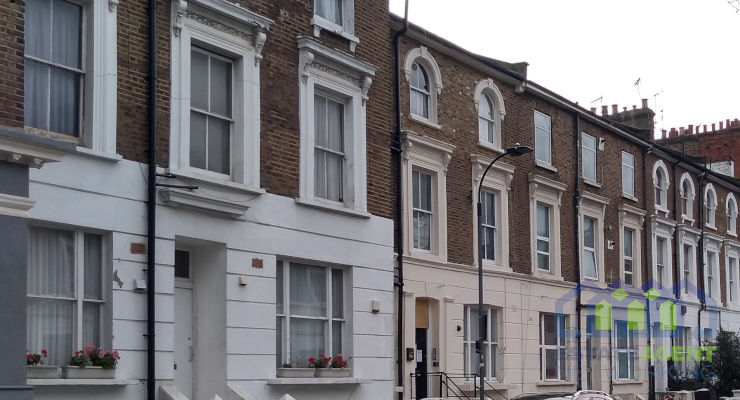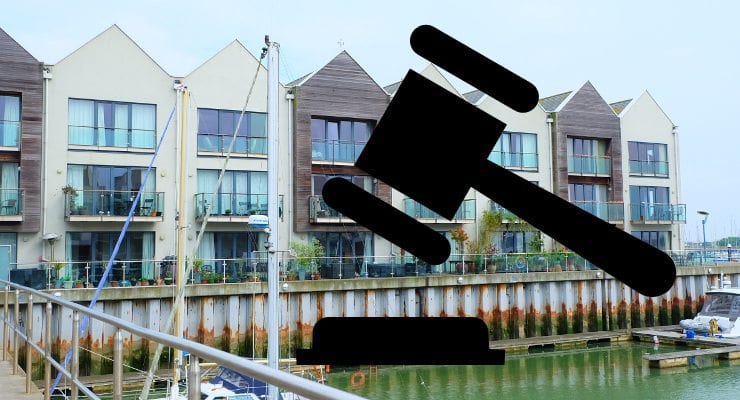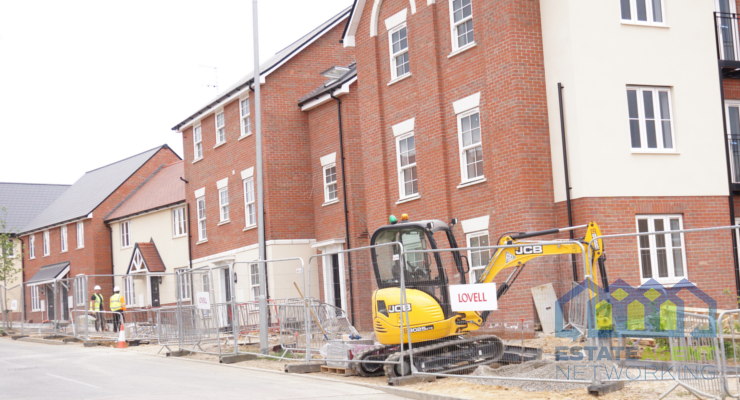Help to Buy has caused house prices to surge for first-time buyers
First-time buyers in and around London have seen some of the biggest jumps in average house prices since the Help to Buy schemes were introduced from 2013, research from estate agency Springbok Properties has found.
Springbok Properties looked at the average cost of a first-time buyer property across the UK and where has seen the largest uplift in price growth since Help to Buy was introduced.
While Help to Buy has given many a leg up when it comes to climbing the property ladder, the influx of additional demand has also, perhaps ironically, pushed the cost of Help to Buy homes up considerably.
Across Great Britain, the average cost of a first-time buyer property has increased by 32.8% since 2013, almost on par with the regular market.
The typical price first-time buyers paid for a property in Barking and Dagenham was £281,396 in 2019, an alarming 70.8% increase from 2013.
This isn’t the only East London region to see huge increases the average first-time buyer price, as they rose by 60.7% in Newham to £349,874 and 60.1% in Havering to £307,874.
Other areas to see a strong uplift are Waltham Forest in North East London, rising by 68.7% to £408,233; Thurrock in Essex, increasing by 59.2% to £237,635; and Stevenage in Hertfordshire, rising by 58.7% to £250,086.
Scotland and the North East more subdued
The City of Aberdeen, which has been hit hard by falling oil prices in the past few years, is the only area of the UK where first-time buyers are paying less than in 2013. The price they paid has fallen by -10.9% to £126,794 in 2019.
Some other areas of Scotland have only seen modest rises, as Inverclyde prices have risen by just 6.55% to £83,995, while South Ayrshire prices have seen a 6.9% uplift to £102,992.
In England, the worst climber is County Durham in the North East, where prices rose by 3.5% to £88,790. This is followed by Redcar and Cleveland, where prices climbed by 4.5% to £105,156; while behind that is Middlesbrough with an increase of 5.0% to £110,304.
It seems Help to Buy hasn’t been enough to kick-start some of these markets into action.
Founder and CEO of Springbok Properties, Shepherd Ncube commented:
“Help to Buy was introduced by the previous government with good intentions – to assist would-be home-buyers in their first step onto the property ladder.
However, it seems that whilst around 200,000 buyers have indeed been supported, the unintended consequence in most areas has seen an above average hike in prices driven by the demand that Help to Buy has created.
First rung homes are supposed to be more affordable, but we’ve seen the average price paid by a first-time buyer accelerate to similar levels as the wider market. Not only has this made it more difficult for today’s aspirational homeowner, but perhaps some tax-payers might question the wisdom of using their money to fuel house prices even further?”
About Help to Buy
Help to Buy is characterised by three schemes.
The Help to Buy Equity Loan was launched in 2013 and has buyers contribute a 5% deposit towards a new build, with the government providing a 20% equity loan on the property, or 40% within London, which is interest-free for the first five years.
This is available on new builds under £600,000 in England and £300,000 in Wales. The scheme is running until 2023, though after 2021 it will only be available for first-time buyers and there will be caps on the value of homes people can buy.
This is the most well-known of the Help to Buy schemes.
The second scheme is the Help to Buy Mortgage Guarantee, which also launched in 2013. This had the government act as guarantors against loans, while it wasn’t restricted to new build. It was discontinued at the end of 2016.
The Help to Buy ISA was launched in 2015, which saw savers pay money into an ISA and then get a cash bonus form the government. The scheme closed for new entrants in November 2019, while the bonus must be claimed by 2030.
|
First-time buyer average house price – Largest increases – (2013 – 2019)
|
|||
|
Location
|
Average FTB house price 2013
|
Average FTB house price 2019
|
Average FTB % change / growth (2013-2019)
|
|
Barking and Dagenham
|
£164,791
|
£281,396
|
70.8%
|
|
Waltham Forest
|
£242,021
|
£408,233
|
68.7%
|
|
Newham
|
£217,777
|
£349,919
|
60.7%
|
|
Havering
|
£192,331
|
£307,874
|
60.1%
|
|
Thurrock
|
£149,239
|
£237,635
|
59.2%
|
|
Stevenage
|
£157,609
|
£250,086
|
58.7%
|
|
Bexley
|
£191,496
|
£302,769
|
58.1%
|
|
Luton
|
£132,616
|
£209,073
|
57.7%
|
|
Thanet
|
£125,923
|
£197,912
|
57.2%
|
|
Waverley
|
£213,833
|
£334,473
|
56.4%
|
|
England
|
£152,826
|
£206,018
|
34.8%
|
|
Wales
|
£111,080
|
£139,436
|
25.5%
|
|
Scotland
|
£101,872
|
£122,148
|
19.9%
|
|
Great Britain
|
£145,436
|
£193,194
|
32.8%
|
|
First-time buyer average house price – Lowest increases (2013 – 2019)
|
|||
|
Location
|
Average FTB house price 2013
|
Average FTB house price 2019
|
Average FTB % change / growth (2013-2019)
|
|
City of Aberdeen
|
£142,288
|
£126,794
|
-10.9%
|
|
County Durham
|
£85,764
|
£88,790
|
3.5%
|
|
Redcar and Cleveland
|
£100,603
|
£105,156
|
4.5%
|
|
Middlesbrough
|
£90,389
|
£94,774
|
4.9%
|
|
Inverclyde
|
£78,833
|
£83,995
|
6.5%
|
|
South Ayrshire
|
£96,331
|
£102,992
|
6.9%
|
|
Hartlepool
|
£84,690
|
£90,765
|
7.2%
|
|
Preston
|
£96,794
|
£104,262
|
7.7%
|
|
Dumfries and Galloway
|
£101,009
|
£109,147
|
8.1%
|
|
Darlington
|
£102,465
|
£110,824
|
8.2%
|
|
England
|
£152,826
|
£206,018
|
34.8%
|
|
Wales
|
£111,080
|
£139,436
|
25.5%
|
|
Scotland
|
£101,872
|
£122,148
|
19.9%
|
|
Great Britain
|
£145,436
|
£193,194
|
32.8%
|









